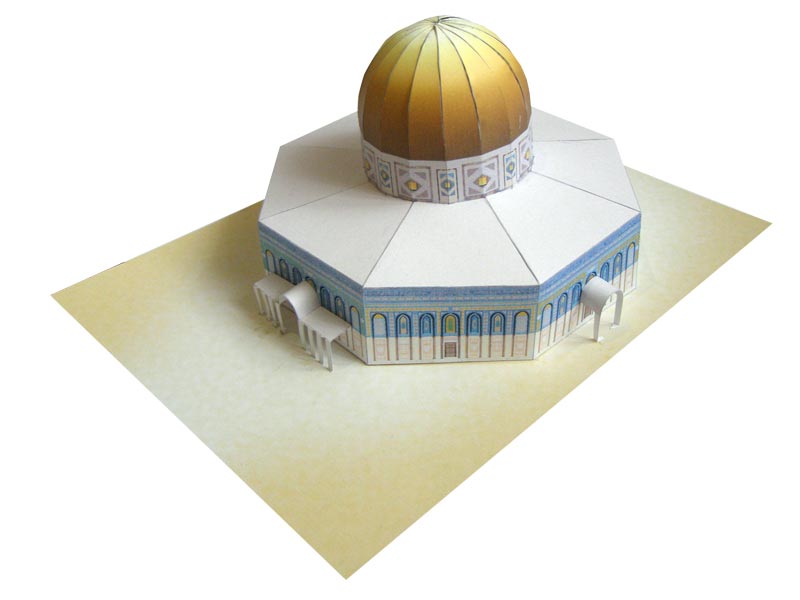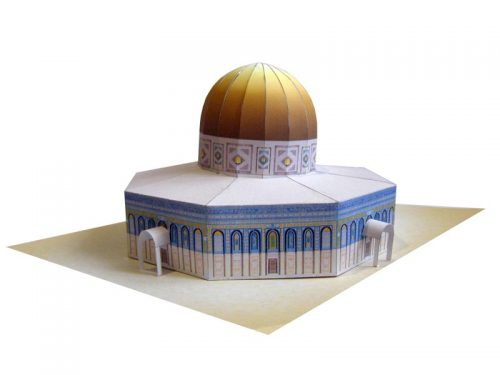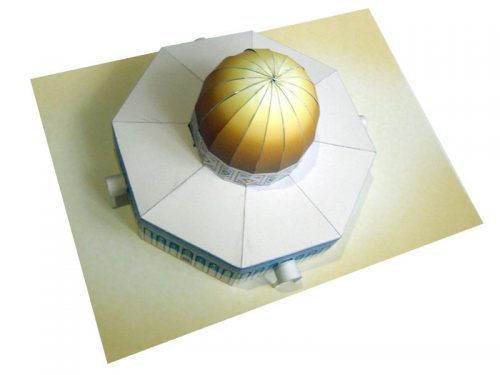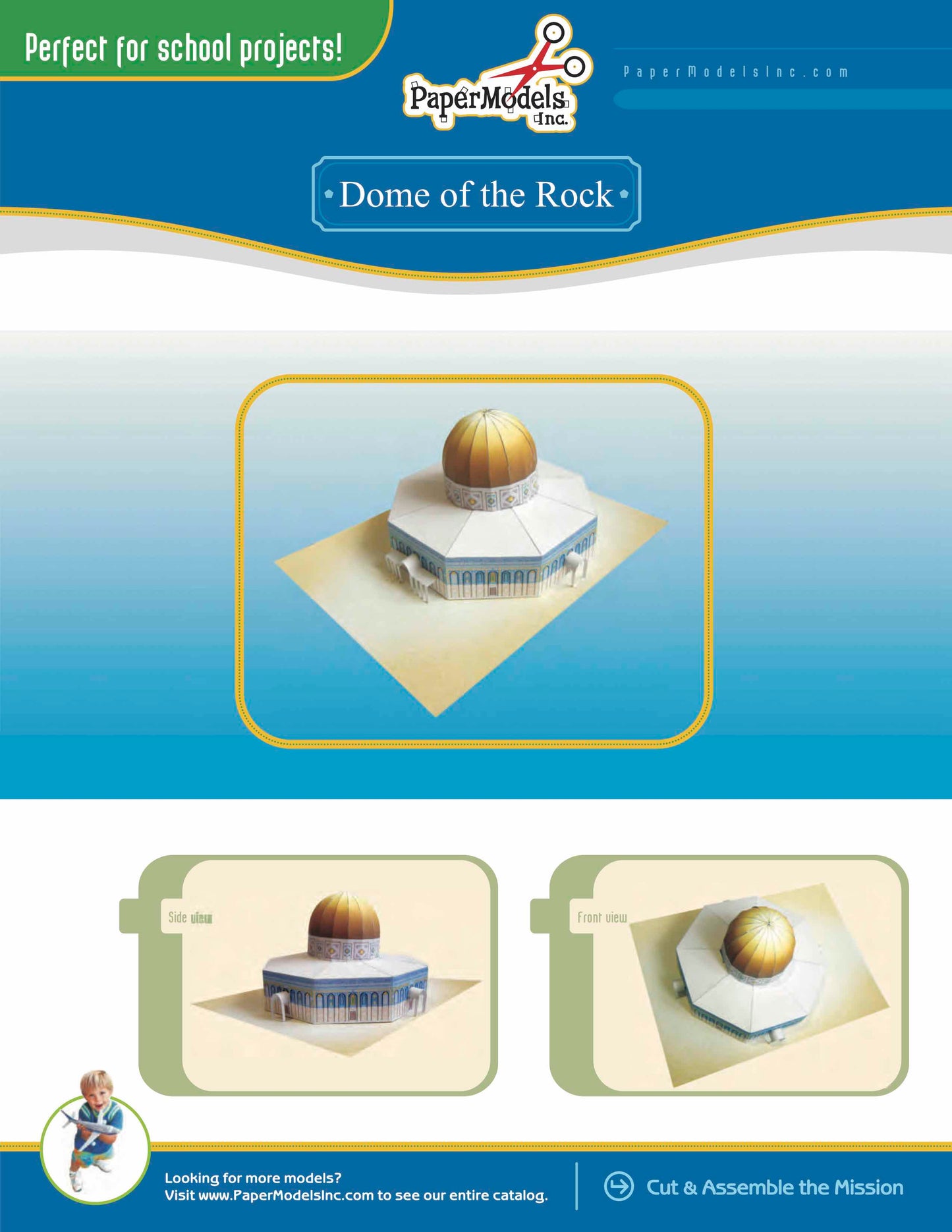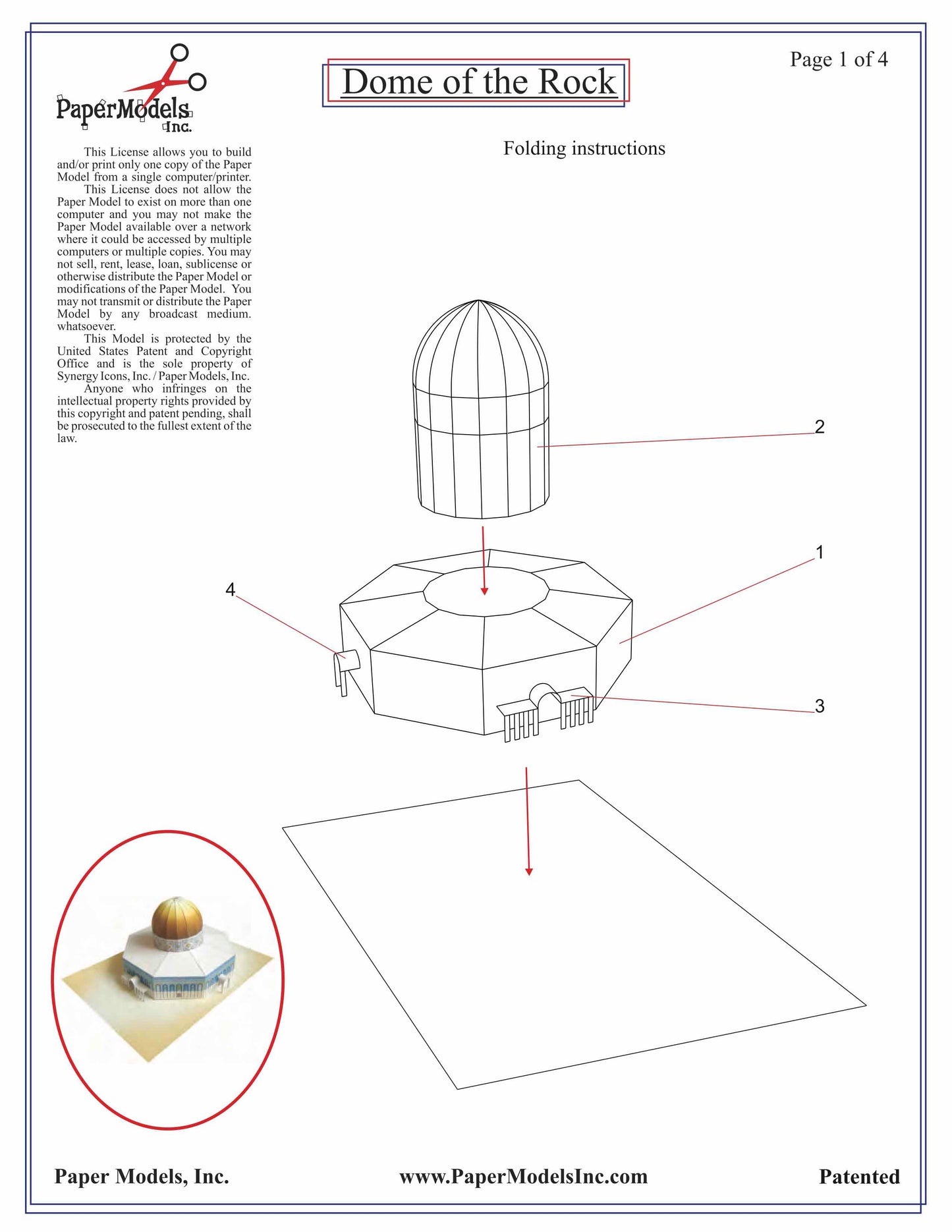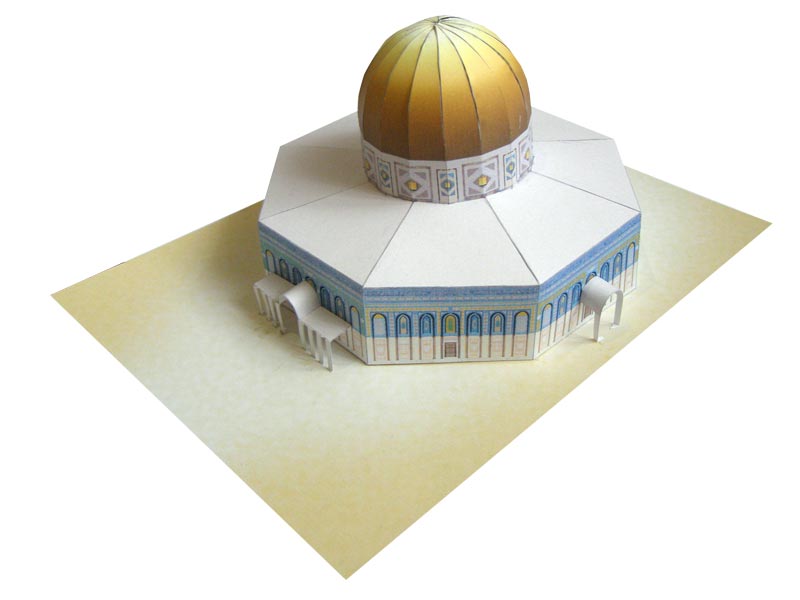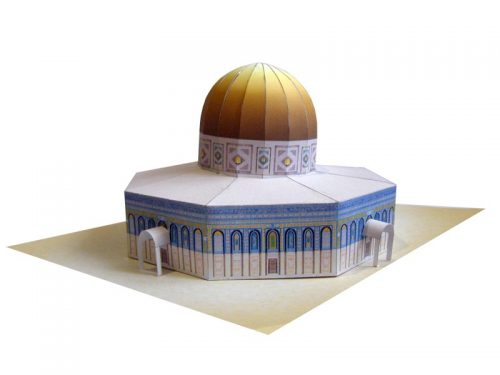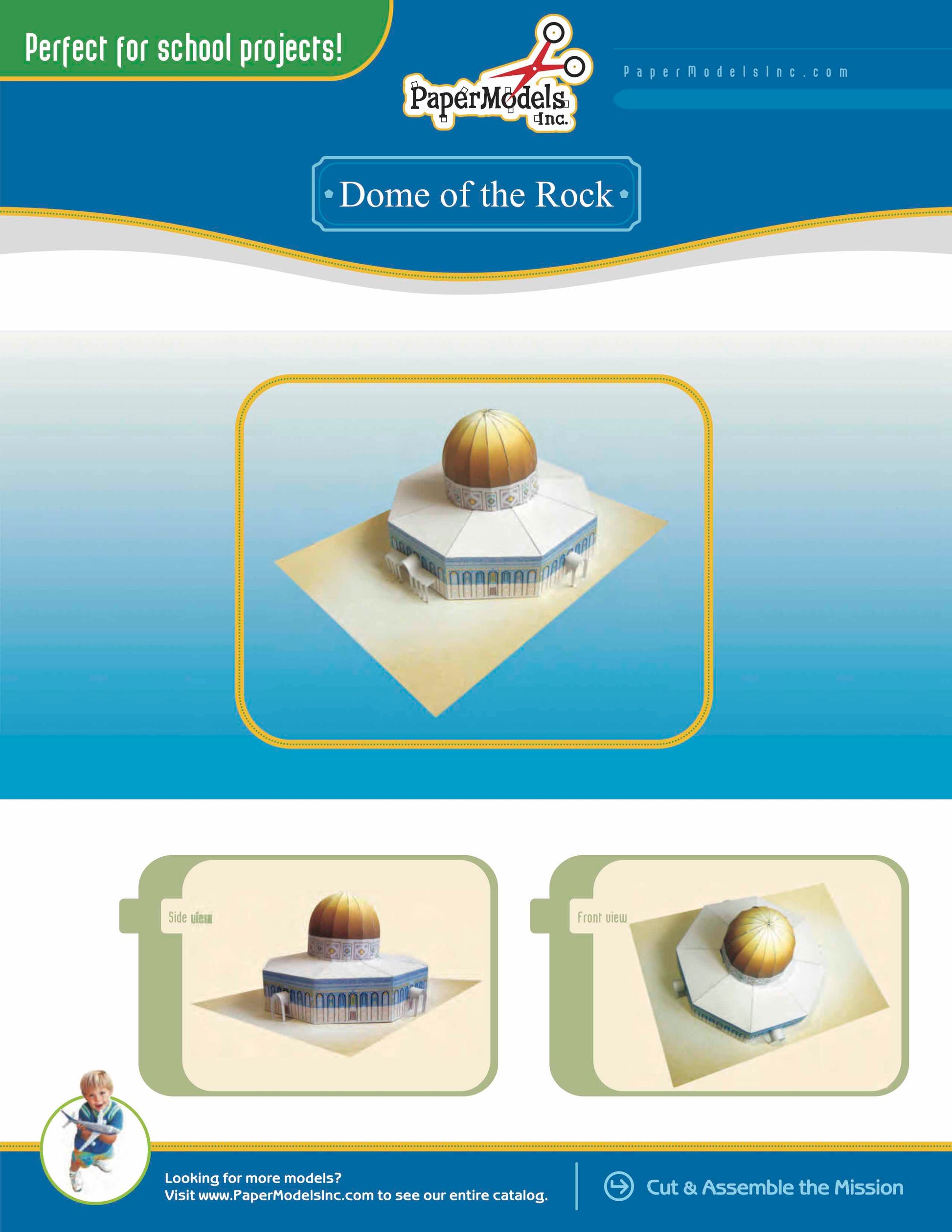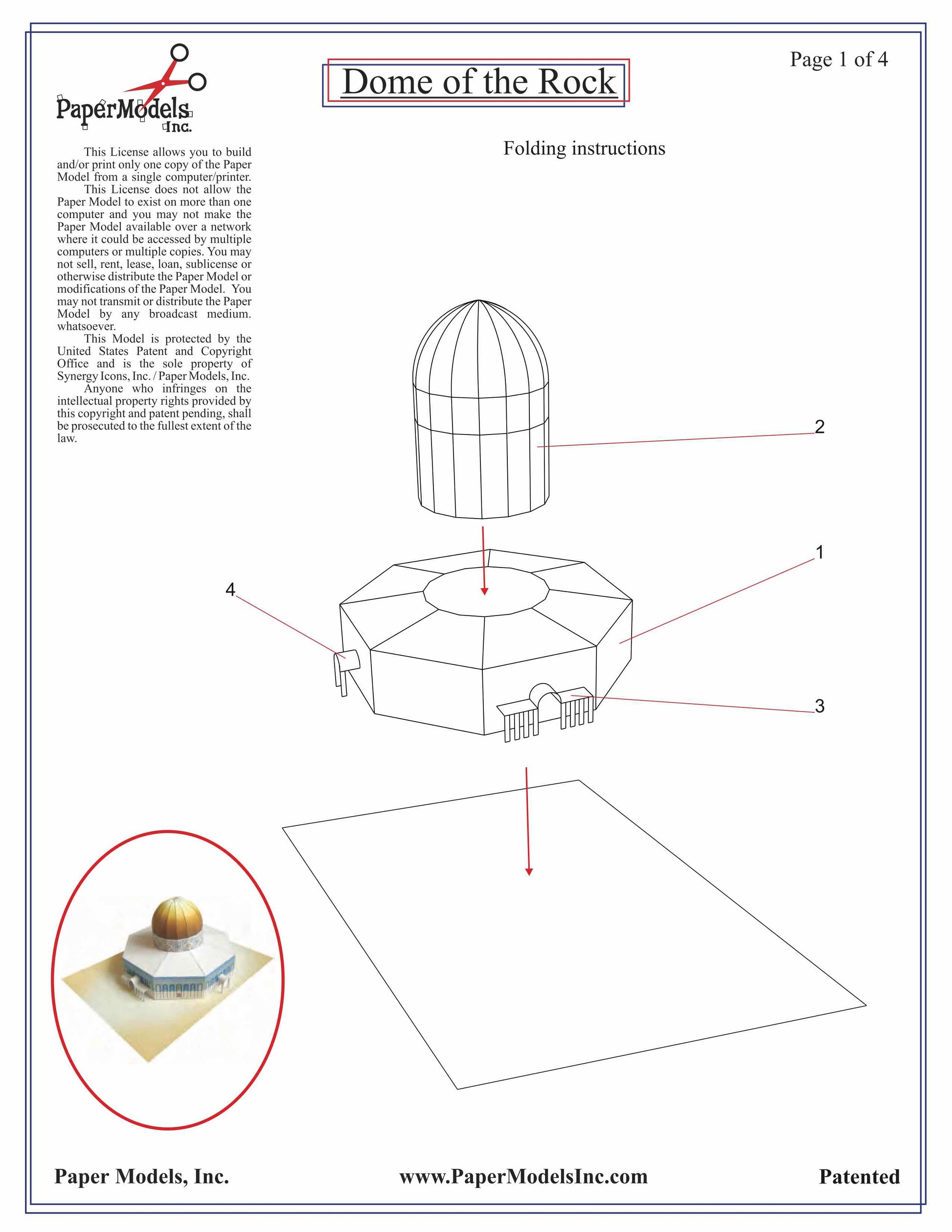Dome Of The Rock - Temple Mount, Jerusalem - Paper Model Project Kit
Dome Of The Rock - Temple Mount, Jerusalem - Paper Model Project Kit
No se pudo cargar la disponibilidad de retiro
🌟 Welcome to Paper Models Online – Your Shortcut to Academic Excellence! 🌟
Are you tired of stressing over last-minute school projects? Look no further! Paper Models Online is here to make your academic life a breeze.
🚀 Why Choose Us?
At Paper Models Online, we understand the pressure of looming deadlines and the desire for that coveted "A" grade. That's why we've crafted the perfect solution for you! Whether you're a student aiming for extra credit, a parent looking for quality time with your kids, or just someone in need of a break from the chaos, our paper models are your ticket to success!
💻 Instant PDF Download OR Pre-Printed & Shipped
You're in control! Choose from our instant PDF download, starting at just $9.95 for the 7"x10" size or $11.95 for the 10"x13" size.
Print it on your home or office printer using regular paper, or opt for the hassle-free pre-printed option. We'll ship it directly to your doorstep for a flat $5 fee via USPS First-Class Parcel, ensuring you get it in 1-3 days!
✂️ Easy Assembly, Maximum Impact
With just a pair of scissors, some glue, and an hour of your time, you can turn these paper sheets into stunning three-dimensional architectural replicas or complete science projects. The images on our website are real models made from our kits, and we even provide a history to help you craft an impressive report.
🎨 Unleash Your Creativity
Not into mission kits? No worries! Our models double as templates for your creative genius. Paint, trace, adjust sizes—your imagination is the only limit! Create a custom masterpiece that reflects your unique style and personality.
🛒 The Buying Process Made Simple
- Choose Your Size: 7"x10" or 10"x13"
- Choose Your Delivery: Instant PDF download or pre-printed and shipped
- Purchase Your Model: It's that easy!

📦 Typical Kit Sample
Each kit includes 8 to 18 pages, providing everything you need to bring the model to life. An "exploded view" guides you through assembly, and a complimentary history adds that extra touch for your report. Impress your teacher not just with creativity but also with your research skills!
Don't let deadlines stress you out. Choose Paper Models Online for your next school project, and let us be Your Best Way To Get An "A"! 🌟
 |
 |
 |
| Exploded View | Sample Pieces | Finished Model |
Free History For Your Report
Dome of the Rock
The Dome of the Rock is a building of extreme historical and religious importance in the Old City of Jerusalem. One of the most prolific buildings of Jerusalem, and recognizable world over, the Dome of the Rock sits upon the Temple Mount/Noble Sanctuary complex on Mount Moriah. It was constructed between 691-692 AD by architect Abd al-Malik ibn Marwan. It was his intent that the facility would not be a mosque, but rather a pilgrimage site. The gold dome was designed to be architecturally stunning, and able to compete on the Jerusalem skyline with the large and ornate Church of the Holy Sepulcher. The reason why the Dome was constructed, and why it was built on that location, is a study on Jerusalem history unto itself.
Mount Moriah has played several important roles in the histories of Judaism, Christianity, and Islam since the three religions began. In all three faiths (considered Abrahamic faiths, since all three more or less descended from Abraham), it is believed that Mount Moriah was the cornerstone of the earth; the very spot from where the rest of the world was created. These religions also hold that this is the location of Abraham's near-sacrifice of his son Issac to the Lord.
Much later, Mount Moriah became the home of the First and Second Jewish Temples. These temples served as a place of worship and sacrifice for the people of Jerusalem. During construction of a massive stone plaza (Temple Mount) around Mount Moriah, a small piece of the top of the mountain was left uncovered and exposed – this rock outcropping became the center of the Jewish temple, and was where blood sacrifices were made. The rock outcropping, also known as the Foundation Stone, contains a small hole on the side where blood from the sacrifices would drain into a naturally-formed cave beneath the stone. This cave, known as The Well of Souls, was rumored to be a one-time hiding place of the Ark of the Covenant and also is said to be the future gathering place of dead souls upon the Apocalypse. After the destruction of the Second Temple and the siege and destruction of Jerusalem in 70 AD after the crucifixion of Jesus Christ, the Temple Mount sat vacant and in ruins for many years.
Noble Sanctuary also played another important role in Islamic culture apart from being the site of Abrahamic traditions. Long being home to the al-Aqsa Mosque, known as “the farthest mosque” in the Quran, the Temple Mount was the destination of the Islamic Prophet Mohammad's famous midnight flight, in a dream. The Foundation Stone, according to the religion, is from where Mohammad ascended to heaven to meet with God and the prophets. The Dome of the Rock was built on the location several years later, as a way to note the religious significance of the site in Islamic history and also as a way for the Islamic faith to compete with other Jerusalem religious sites in terms of architecture.
The structure itself is of an octagon shape, with the famous gold leaf-covered dome being in the center, directly over the Foundation Stone. The dome is constructed of wood, is 60 feet in diameter, and constructed in a classic Byzantine style. The original dome covering consisted of over 100,000 melted down gold coins. Remodeling occurred a few centuries later by Grand Mufti Yacoub Al Ghussein whom took it upon himself to oversee the seven year restoration of both Dome of the Rock and al-Aqsa Mosque. In 1955, an agreement between the governments of Jordan and Turkey provided funds to renovate the structure, mainly consisting of recreating the elaborate Iznik tiles places on the sanctuary's exterior by Suleiman the Magnificent. The one shortfall of this renovation occurred when financial restrictions caused the dome to be recovered in an Italian bronze alloy rather than gold. The gold covering was not reinstated until 1998, via an $8.2 billion donation by King Hussein of Jordan. This donation funded the 80 kilograms of gold necessary to completely cover the dome. The eight walls at the dome's base are each 60 feet wide and 36 feet in height, and covered with ornate porcelain designs. Various inscriptions from the Quran on both the exterior and interior walls are designed to show Islam's significance over Christianity, making the structure not only a shrine but also a tool of religious propaganda.
On the political side, the Dome of the Rock – as well as the Temple Mount and Old City itself – has been the source of constant tension. Many Jews claim this site as being significant in their history, and wish the Dome to be razed in favor of rebuilding the Temple. Islamics lay claim to the location in their faith and hold to the fact that the Mount Moriah complex was in shambles, full of trash and rubbish, when construction on the Dome started. Christian tradition not only holds value to the site as part of their Jewish heritage, but many Christians believe that the Dome must be razed and the Temple rebuilt before the Second Coming of Christ can be initiated. To that end, control of the building and general access to the Mount and Old City have changed hands over the years.
The Islamic leaders of Jerusalem retained control over the sanctuary and the mosque until 1104, during the Crusades. It was at this time the Dome was renovated into a Christian church, and a wooden cross was placed upon the top of the dome. The Knights Templar were key to this occupation of the site. This occupation of the Mount continued until the troops of Saladin recaptured Jerusalem in October 1187. It was at this time that the Dome was reconstructed back into a Muslim sanctuary, and a gold crescent replaced the cross at the top. Under rule of the Ottoman Empire from 1517-1917, the area was preserved and cared for under Islamic guidelines. This continued through 1967, with a couple changes of control along the way; first by the British under the British Mandate of Palestine (1917- 1948), then under the government of Transjordan (modern-day Jordan) from 1948-1967.
The one characteristic that set the Transjordan governorship apart from other governments was a unique law that forbade Jews from entering the Old City. This ended during the Six Day War of 1967, of which the relatively-new State of Israel invaded and captured the Old City. The Jewish occupation of the Old City remains in effect to this day. During the war, several Israeli military officers were believed to be involved in a plot to destroy the Dome of the Rock, however these plans were never carried out, as it was believed that the Temple Mount complex would soon fall into Israeli control via the correct political channels. While Israel did gain control of the Old City and the Mount, it was decided in a good-will gesture to their Islamic neighbors that the State of Israel would not interfere with the holy Islamic site. The Muslim Waqf, a religious trust, was formed to transfer ownership and care of the al-Asqa Mosque, Dome of the Rock, and the entire Temple Mount complex (with the exception of the Western Wall) to the Ministry of Awaqaf in Jordan. This agreement remains in place today. One condition set up in the 1967 Muslim Waqf agreement did allow for non-Muslims to have access to the Mount, except in times of extreme political or religious tensions. It also made provisions for Jews to have full access to the Western Wall. Regular non-Muslim visitation rights to Temple Mount had remained steady until 2000, when Israeli Prime Minister Ariel Sharon visited the Mount, an event that was viewed by Islamics to be an Israeli move to gain control over the complex. This visit by Sharon led to a complete barring of non-Muslims from the Mount until Sharon's removal from power in 2006. Since then, non-Muslims are allowed on the Mount and to visit Dome of the Rock and al-Asqa Mosque up close during limited hours. Still, non- Muslim prayers, Hebrew Bibles or the Torah, and musical instruments are prohibited at the complex. Non-Muslims are also forbidden from entry into either structure.
© Copyright – Paper Models, Inc. – All Rights Reserved
Share
